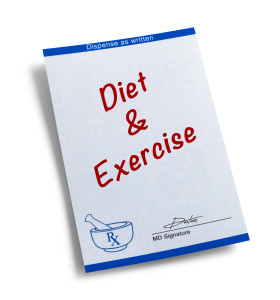Pre-Diabetes Epidemic, Are You At Risk?
December 9th, 2017 Right now, we are in a midst of an epidemic of Type 2 Diabetes (T2D). This is not surprising. Over the past 30 years, the US population has grown increasingly obese, in some parts of the country over 40% of people report having a Body Mass Index (BMI) of over 30 (clinically obese)! Obesity is one of the main risk factors for diabetes. Why have we become so obese? I think the main factors are overconsumption of calories and lack of physical exertion. We are consuming more processed/packaged foods which are high in simple sugars and saturated fats and sitting more hours in front of electronic devices. Think back to 20 years ago, you had to walk around the mall when you went shopping. When you got a paycheck on payday you had to walk it to the bank and wait in line. Now, you can shop online and have all your packages delivered to your doorstep and your bank account automatically gets replenished on payday. Voila! No physical exertion needed, no calories burned.
Right now, we are in a midst of an epidemic of Type 2 Diabetes (T2D). This is not surprising. Over the past 30 years, the US population has grown increasingly obese, in some parts of the country over 40% of people report having a Body Mass Index (BMI) of over 30 (clinically obese)! Obesity is one of the main risk factors for diabetes. Why have we become so obese? I think the main factors are overconsumption of calories and lack of physical exertion. We are consuming more processed/packaged foods which are high in simple sugars and saturated fats and sitting more hours in front of electronic devices. Think back to 20 years ago, you had to walk around the mall when you went shopping. When you got a paycheck on payday you had to walk it to the bank and wait in line. Now, you can shop online and have all your packages delivered to your doorstep and your bank account automatically gets replenished on payday. Voila! No physical exertion needed, no calories burned.
Diabetes is often preceded by a phase called “prediabetes”. This is usually about a 5 year period where sugars are above normal, but not high enough to qualify as diabetes. Prediabetes is not a period before “the inevitable”. In fact, with proper nutrition, exercise, weight loss, and certain medications prediabetes can be reversed and diabetes prevented. Unfortunately, one third of American adults (84 million) have prediabetes right now! Yes, this is not an exaggeration, 1/3!!! Even more bad news, 9 in 10 people with prediabetes are not aware of their condition!
Simple blood tests can detect prediabetes. These include a fasting blood sugar, hemoglobin A1C (HgbA1C), and an oral glucose tolerance test (OGTT). All primary care offices can run these tests, though the oral glucose tolerance test is typically cumbersome as it requires the person to drink a syrupy sweet liquid and sit for 2 hours. In my own practice, I run the first two tests more often and if there is a discrepancy, I will run the OGTT.
Who should be screened for prediabetes? Anyone who is overweight (BMI>25) and has one of the following risk factors: age>45 years old, first degree relative with Type 2 Diabetes, specific ethnic groups (Asian/Pacific Islander, Native American, Latino, African American), women diagnosed with gestational diabetes during pregnancy or giving birth to babies over 9 pounds, people with high cholesterol, high blood pressure, or prior heart disease/stroke, and people who have taken antipsychotic medications.
One of the most effective ways that people with prediabetes can prevent the onset of true diabetes is by enrolling in a Diabetes Prevention Program (DPP). This is a 16 step program administered widely in many community centers, YMCA’s and local health departments. These programs help people to make healthier eating choices and encourage more than 150 minutes of exercise per week, with the goal of losing at least 4% of the bodyweight. If you need help finding a DPP, you can go to PreventDiabetesSTAT.org. Personalized health coaching is another valuable resource.
Prediabetes is an opportunity to heal and reverse the path to diabetes. If you have any of the risk factors above, schedule an annual physical with a medical provider soon. If you currently have prediabetes, make sure you are eating healthy and exercising. I often tell my patients with prediabetes to think of healthy diet and exercise as effective as a prescription medication. I will often write “Exercise and Healthy Diet” on a prescription pad and hand it to the patient to post on their fridge or desk so they know that is what the doctor ordered. There are no “quick fixes” for prediabetes, but every healthy lifestyle change no matter how small can make a big difference.
